DIY Homemade Skincare: Whether you’re avoiding the crowds of the shopping malls or looking to clean up your body care and cosmetics: making your own products has so many benefits. Today we explore why all-natural ingredients on your body matters, and delve deep with a complete head-to-toe DIY guide to making your own all-natural body care and cosmetics right at home.
DIY Homemade Skincare: Why All Natural Matters
You’ve undoubtedly heard it before: your skin is your body’s largest organ, and it’s useful to really see the skin’s surface as a part of your actual body—because it is! Products that you put onto your skin are absorbed directly into the bloodstream via your pores. Whether it be creams, oils, shaving gels, soaps, perfumes, or cosmetics like makeup: these seemingly small quantities of products add up day after day.
These synthetics and downright toxic ingredients begin to add up in the blood, get stored away in the body, and can start to manifest themselves as a wide range of acute and chronic health problems. Allergic reactions are just the start of it because toxicity is associated with a wide range of health problems, including endocrine disruption, infertility, neurodegenerative diseases, and abnormal cell growth.1-3
The cosmetic industry is notoriously unregulated when it comes to ingredients, labeling, quality, and toxicity.4 Products are regularly recalled for genuine contamination with deadly ingredients like asbestos— but the problem isn’t only with these tainted products. The equally problematic and perhaps more insidious issue is the wide range of legal ingredients that build up toxicity in the body over time.
Legal ingredients that are harmful in cosmetics include:
- Parabens
- Synthetic colors
- Fragrances
- Triclosan
- Sodium lauryl sulfate (SLS)
- Sodium laureth sulfate (SLES)
- Phthalates
- Formaldehyde
Consuming these ingredients orally (drinking or eating the product) comes with warning signs to call poison control—so why on earth are we putting this stuff on our skin?!
DIY Homemade Skincare: Key Ingredients
Making your own body care and cosmetics is actually pretty simple. Having a basic understanding of some of the key ingredients can be useful and empowering. The more you understand why things work, the more creative and innovative you can become in your DIY projects. So let’s explore some of the key players!
Coconut Oil
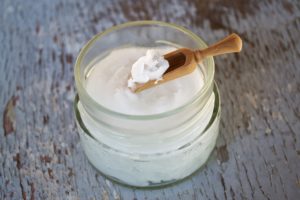
Coconut oil is at the top of the list because it is an absolute gem for DIY body care– often as a one-stop-shop. You can use coconut oil to remove makeup, moisturize, as a shaving cream, and as a stand-alone hair mask. The key with coconut oil is investing in extra-virgin, organic, and cold-pressed oil. Avoid the ‘deodorized’ versions, which are high-heat treated to remove the subtle coconut scent. With fats, it’s always good to keep the heat out of the equation to avoid denaturing the product and turning it rancid (toxic).
Beeswax
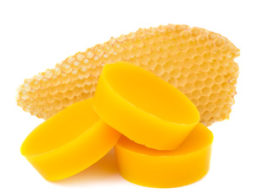
Beeswax is crucial in setting a product and sealing the skin without blocking your pores. Beeswax forms a breathable protective layer. It makes an ideal additive for any dry skin care, or a balm for soothing wounds, cuts, scrapes, or burns. It also helps give a more workable texture when it comes to cosmetics.
Shea Butter
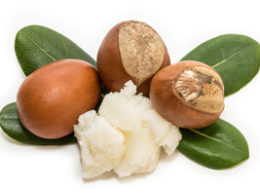
Shea butter is fat extracted from the shea tree’s nuts. It’s thick, smooth texture locks in moisture and provides abundant nourishment to the skin. Loaded with vitamins A and E, shea butter helps heal the skin and soothes it from irritations. It is also edible! Making it an ideal all-natural skin moisturizer.
Apple Cider Vinegar
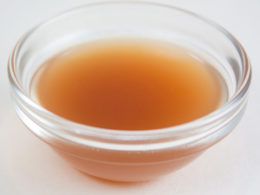
Apple cider vinegar is another all-star multi-purpose ingredient. This vinegar, made from the fermentation of apples, is loaded with benefits, including antimicrobial and antioxidant properties. It contains acetic acid and alpha hydroxy acid, which promotes skin exfoliation, can help clear out build-up in pores, and rebalance the pH of your skin.
Apple cider vinegar should not be used directly on the skin unless you’re spot-treating problem areas with a cotton swab. Ideally, ACV should be diluted at a 1:1 ratio with spring, distilled, or properly filtered water. Or used appropriately diluted in recipes (see below) with other ingredients like witch hazel.
Essential Oils
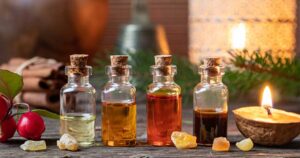
Essential oils do more than smell nice; these all-natural distilled plant essences offer a wide range of medicinal and therapeutic benefits. Some of our favorite oil benefits include:
- Anti-aging: lemon, sandalwood, clary sage, carrot seed, frankincense.
- Scar-reducing: helichrysum, frankincense, geranium, lavender, cedarwood.
- Anti-bacterial/ anti-microbial: tea tree, eucalyptus, peppermint, lemongrass.
Honey
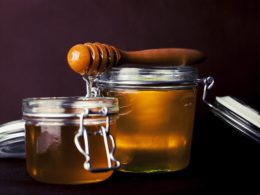
Some skin masks (like clays) can be too harsh for sensitive or acne-prone skin, but honey is a go-to for any and every skin type. Whether your skin is dry, oily, burnt, or sensitive: honey is an all-rounder for all and every ailment. Produced by honey bees, this sweet and sticky edible product helps heal the skin, balance the pH, cleanse, and naturally locks in moisture (without clogging your pores!).
Honey has antibacterial and antiseptic properties, which helps rid the skin of impurities like the dirt and bacteria that can lead to unwanted breakouts. Honey also helps boost collagen production in the skin and is loaded with anti-aging antioxidants
Witch Hazel
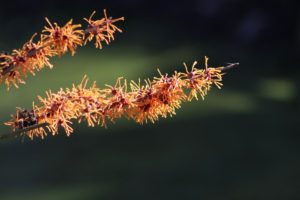
Witch Hazel is a natural toner made from a flowering plant; as an astringent liquid, it has the ability to balance out oily skin due to its tannin-rich antioxidant properties. Used as a spray, it can also help heal wounds, reduce inflammation, and calm irritation. It is gentle and can be undiluted even on sensitive or acne-prone skin.
Aloe Vera
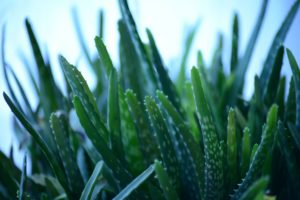
With its soothing and cooling properties, aloe vera is the ultimate ingredient for all things burns and irritations. It also has potent moisturizing powers and antibacterial and antioxidant properties.
Ideally, you want to use fresh aloe vera gel directly from the plant. Aloe plants can easily be kept indoors in all types of climates– having one at home is a great idea. If you’re opting for a store-bought gel, look for one that contains only 100% aloe and no other fragrances or preservatives.
Clays
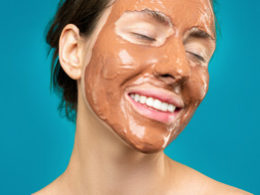
There is a wide range of clays that can be used topically on the skin, including bentonite clay, french green clay, kaolin clay, and rhassoul clay. Although they all have slightly varying qualities, the main purpose of using clay on the body is to draw out impurities.
Clay’s pulling power draws out and traps dirt, bacteria, and other impurities that can clog up your pores. Doing so can also leave the face and body quite dry. When using clay, the key is not to leave it on until it dries completely. Removing clay from the skin at the very first sign of it drying up will allow it to draw out impurities without completely dehydrating the skin.
Activated Charcoal
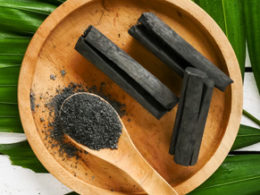
Activated charcoal is fine black dust, often made from coconut shells, that has a powerful adsorbing power, meaning that it pulls in. Like clay, charcoal has a powerful pull that draws out and traps toxins and other impurities. It can also leave the skin feeling a little dry if left on too long.
Activated charcoal is a seriously multi-purpose powder. It can be taken internally for detoxification purposes as a binder and even be used on your teeth as a naturally whitening agent!
Baking Soda
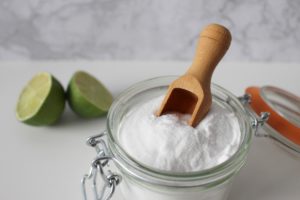
Last but not least is baking soda (also known as Sodium Bicarbonate), one of the most versatile ingredients for body care and home cleaning! It is used as a whitening agent for clothes and teeth. It acts as a great exfoliator and has antibacterial properties.
Note that baking soda is quite abrasive and should ideally not be used directly on tooth enamel or on more sensitive parts of your skin like your face. Using it diluted in the recipes below lets you get the most out of your baking soda without overdoing it.
DIY Homemade Skincare: Recipes for All-Natural Cosmetics and Body Care
Face Masks

Giving yourself a facemask at home is the ultimate self-care, but it doesn’t have to be complicated. Many store-bought face masks are full of nasty ingredients that actually contribute to premature aging skin in the long-run. These whole-food masks are so natural they could literally be eaten!
If your face is more sensitive or was recently exposed to the sun, opt for a honey mask or one of the cooling masks with yogurt or cucumber, and avocado.
- Honey Frankincense Face Mask
Ingredients:
- 2 tablespoons raw honey
- 5 drops frankincense essential oil
Instructions:
- Mix all the ingredients together in a bowl
- Apply to the face in gentle circular motions
- Let sit for 5-10 minutes
- Rinse off with warm water
- Follow up with your favorite face cream or oil.
- Bentonite Charcoal Face Mask
Ingredients:
- 2 tablespoons bentonite clay powder
- 1 tablespoon activated charcoal powder
- About 2 tablespoons filtered water (add ½ tbsp at a time until a thick, smooth paste is formed)
Instructions:
- Mix all the ingredients together in a bowl
- Apply to the face in gentle circular motions
- Let sit for 5 minutes max before rinsing off with warm water. The mask should not dry completely; as soon as it begins to feel stiff, rinse off. Leaving the mask on until it completely dries will dehydrate the skin significantly.
- Follow up with your favorite face cream or oil.
- Turmeric Honey Yogurt Face Mask
Ingredients:
- 1 tablespoon plain natural yogurt
- 1 tablespoon raw honey
- 1 tablespoon turmeric powder
Instructions:
- Mix all the ingredients together in a bowl
- Apply to the face in gentle circular motions
- Let sit for 5-10 minutes
- Rinse off with warm water
- Follow up with your favorite face cream or oil.
- Cooling Cucumber Avocado Face Mask
Ingredients:
- ½ an avocado
- ¼ cucumber
- Optional: 1 tablespoon plain natural yogurt
Instructions:
- Mix all the ingredients together in a bowl
- Apply to the face in gentle circular motions
- Let sit for 5-10 minutes
- Rinse off with warm water
- Follow up with your favorite face cream or oil.
Face Scrubs
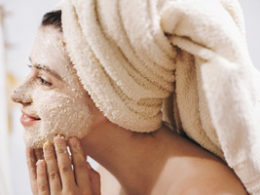
Face scrubs are ideal to get rid of dead skin and promote circulation which boosts collagen! Ideally scrub the face gently, and not more than 1-2 times per week.
- Honey Matcha Face Scrub
Ingredients:
- 1 tablespoon raw honey
- 1 tablespoon Celtic salt
- 1 teaspoon matcha powder
Instructions:
- Mix all the ingredients together in a bowl
- Apply to the face, and scrub in gentle circular motions
- Rinse off with warm water
- Almond Olive Face Scrub
Ingredients:
- ⅓ cup almond meal
- 2 tablespoons olive oil
Instructions:
- Mix all the ingredients together in a bowl
- Apply to the face, and scrub in gentle circular motions
- Rinse off with warm water
Hair Masks
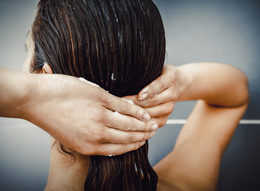
Hair masks are a great way to super-hydrate your locks. They can be used in the summer to hydrate the hair post-sun-exposure, but are equally important during the winter if the body and hair is exposed to artificial dry heat from a central heating system. Note that the masks that use oils can be left in for up to 24-hours. Oil masks are also notoriously good at what they do and may take a wash or two to fully remove. Best to avoid an oil mask the day before a big event or outing, just in case.
- Coconut Oil Hair Mask
Ingredients
- ¼ cup organic coconut oil
- 5 drops rosemary essential oil
- 5 drops lavender essential oil
Instructions
- Melt the coconut oil in a saucepan (only until its warm, not hot)
- Add in essential oils, and mix with a spoon
- Apply to hair from roots to tips
- Leave in for 30-60 minutes or overnight
- Rinse with shampoo and conditioner, as usual.
- Avocado Hair Mask
Ingredients
- 1 small ripe avocado
- 1 tablespoon raw honey
- 1 tablespoon olive oil
- Splash of filtered water (enough to ensure it blends properly)
Instructions
- Blend all the ingredients into a thick paste (add in water little by little, using just enough to blend). Alternatively, you can mash the avocado into a paste and then mix in the other ingredients.
- Apply to hair from roots to tips, leave in for 30 minutes.
- Rinse out with shampoo and conditioner, as usual.
Dry Shampoo

Dry shampoo can be as easy as baking soda, or cacao powder– depending on if your hair is on the lighter or darker side. Dusting a little bit of powder (baking soda for lighter hair, and cacao powder for darker hair) at the oily roots, and then tousle your hair to disperse it. The powders help absorb the oil and leave your hair looking fresh!
Foot Mask

Dry, cracked feet got you down? At-home pedicures are so simple. Start with a simple foot soak, in a basin of warm water, with a ⅓ cup bicarb soda, and a few drops of peppermint essential oil diluted in 1 tablespoon of coconut oil. Let them sit in there for 30 minutes, followed by a good scrub down of all the rough parts (with a pumice stone). Follow up with a foot mask!
Soothing Foot Mask
Leaving this foot mask on overnight is ideal! By tying a plastic bag (or a compost bag!) around each foot, and then some socks, you’ll avoid getting any grease on your sheets.
Ingredients
- 2 tablespoons almond oil
- 2 tablespoons cacao butter (melted
- 2 tablespoons raw honey
- 1 teaspoon lemon juice
- Optional: 1 teaspoon vitamin E (or you can crack open 3-4 vitamin E capsules)
Instructions
- Add all the ingredients into a bowl and mix well
- Lather on the feet before bed, and slip each foot into a plastic bag, then pop socks on, to keep the bag in place.
- In the morning, rinse off in the shower!
Lip Scrub
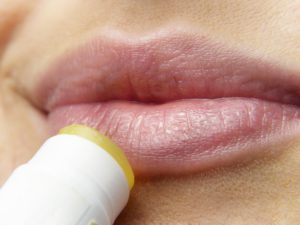
Whether your lips are dry from the summer sun or the dry heat coming from central heating systems in the winter: a lip scrub is the perfect solution to get rid of dead skin and invigorate your lips with fresh collagen.
Ingredients
- 1 teaspoon of honey
- 2 teaspoons sugar
Instructions
- Mix the honey and sugar together
- Apply to lips in a circular motion
- Rinse off with warm water
- Moisturize with lip balm or almond oil
Body Scrub

This coffee scrub will invigorate your body, get rid of dead skin, and promote blood flow and collagen. You can make this recipe with used coffee grounds, no need to waste fresh ones!
Coffee Scrub
Ingredients
- ½ cup coffee grinds
- ½ cup sugar
- ½ cup coconut oil
- Optional: 5-10 drops of peppermint essential oil
Instructions
- Mix all the ingredients in a bowl
- Use the scrub in the shower, apply all over the body (apart from face), rubbing in circular motions
- Rinse off with warm water
Whipped Body Butter
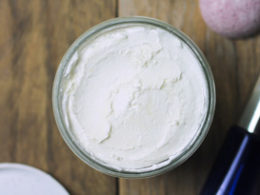
Ingredients
- ¾ cup cacao butter
- ¼ cup coconut oil
Instructions
- In a doubt broiler, melt down the coconut oil and cacao butter
- Pop the mixture in the freezer until its cold, but not frozen
- Using a hand mixer or a food processor with a whisk, whip until the mixture is fluffy (should take about 5 minutes)
- Store in an airtight jar for up to 6 months.
After-Sun Body Spray
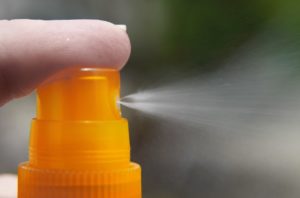
After a long day in the sun, or if the skin has gotten a little too much UV, this after-sun body spray will help draw out the heat and soothe the skin.
Ingredients
- A glass spray bottle
- 3 tablespoons aloe vera gel
- ¾ cup witch hazel
- 10 drops lavender essential oil
- 10 drops peppermint essential oil
Instructions
- Add all ingredients into a blender and blend for 10 seconds
- Using a sieve and funnel, strain ingredients into a spray bottle
- Store in the fridge, to add an extra cooling effect– and spray on the skin as needed
Bug Bite Balm
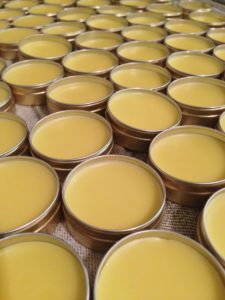
This simple balm offers a combination of soothing and antibacterial properties, creating a perfect rub for any bug bites. The beeswax helps ensure the balm actually stays in place and helps stop the itch. The balm is very concentrated, and a little goes a long way!
Ingredients
- 2 tablespoons shea butter
- 2 tablespoons coconut oil
- 1-ounce beeswax
- ¼ teaspoon calendula oil
- 10 drops lavender essential oil
- 10 drops tea tree oil
Instructions
- In a double boiler, melt down the shea butter, coconut oil, and beeswax
- Remove from heat, add in the oils, and stir well
- Store in a glass jar, and put in the fridge for 1 hour to set.
Deodorant
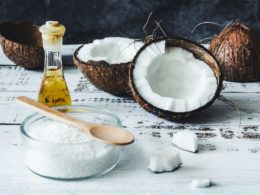
Conventional deodorant is one of the most notoriously nasty products, full of toxins like aluminum and artificial scents. Making your own deodorant is super simple to get the job done without blocking perspiration or introducing toxins into your body. To apply, simply use a pea-sized amount, rubbing it on with your finger.
Ingredients
- 2.5 tbsp unrefined coconut oil
- 2.5 tbsp unrefined shea butter
- 1/4 cup arrowroot starch
- 1 1/2 tbsp baking soda
- 6 drops lemon essential oil
- 6 drops grapefruit essential oil
- 2 drops rosemary essential oil
Instructions:
- Melt the coconut oil and shea butter in a double broiler
- Remove from heat and stir in the starch and baking soda until fully smooth
- Add in the essential oils
- Store in a jar and leave in the fridge for 3 hours to set.
Toothpaste
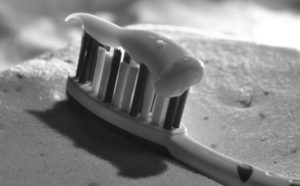
Conventional toothpaste has a warning label to call poison control if swallowed. This is very problematic since the porous skin in our mouths allows for direct absorption into the bloodstream! Opting for non-toxic toothpaste that avoids neurotoxins like fluoride and synthetic flavors is a must.
Ingredients
- 6 tbsp coconut oil
- 6 tbsp baking soda
- 25 drops essential oil (like grapefruit, peppermint, or sage)
- 1 tsp stevia (optional)
Instructions
- Melt the coconut oil in a double broiler
- Stir the rest of the ingredients, and store in a small glass jar
Mouthwash Alternative: Oil Pulling
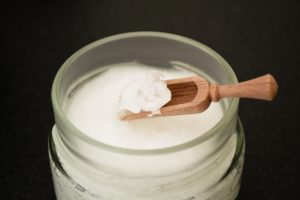
Swishing with antibacterial mouthwashes kills not only the bad bacteria but also the good bacteria. Our oral microbiomes are a major line of defense when it comes to our immune system, so avoiding these pharmaceutical-grade bacteria killers is important.
Instead of swishing with toxins, consider swapping to the ancestral practice of oil pulling. Simply add 1-2 tablespoons of coconut oil or sesame oil into your mouth, and swish for 5-10 minutes. The oil absorbs toxins and actually pulls them from the nooks and crannies of your mouth. Oil pulling has many benefits, including natural teeth whitening!
Foundation
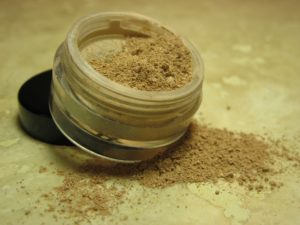
Ingredients
- 1.5oz almond oil
- 1oz shea butter
- 0.5oz cacao butter
- 0.5oz beeswax
- ⅛th teaspoon vitamin E oil
- 0.5oz zinc oxide (non-nano, not micronized) *this recipe will offer 20SPF coverage with this quantity of zinc*
- Cacao powder *quantity depends, see below*
Instructions
- In a double boiler, melt down all the ingredients except for the zinc and cacao
- Remove from the heat, and add in the zinc and stir well
- The quantity of cacao will create the shade of foundation, and to match it to your skin tone will require adding in the cacao little by little. Start at ½ a tablespoon of cacao, and then add in increments of ½ teaspoon at a time. Half a tablespoon is a light foundation, and with each ½ teaspoon added will jump a shade darker.
- Store in an airtight container, and let it set in the fridge for 2 hours.
- Apply using fingers or a face sponge!
Bronzer

Getting your ideal shade of bronzer will depend on your skin tone and how bronzed you want to be. You can always add more cacao powder to darken it up!
Ingredients
- 1 tablespoon cinnamon powder
- 1 teaspoon of cocoa powder
- 1 teaspoon nutmeg powder
- 2 teaspoon arrowroot powder
Instructions
- Simply mix all the ingredients together and store in an airtight container.
Blush
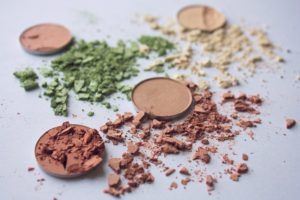
Ingredients
- ½ tablespoon arrowroot powder
- Beetroot powder *quantity depends, see below*
Instructions
- Start at ⅛ a teaspoon of beetroot powder, mixed into the arrowroot. Simply continue to add incrementally until the desired color is reached.
- Store in an airtight container
Mascara
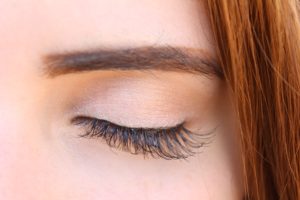
This recipe does call for an empty mascara bottle, which ideally you buy clean (they are sold online), or you can re-use an old bottle that has been properly cleaned out, sterilized, and dried.
Ingredients
- 1 teaspoon shea butter
- 1 teaspoon coconut oil
- 1 1/2 teaspoon beeswax
- 4 teaspoons of aloe vera gel
- ½ teaspoon of activated charcoal (or 1-2 capsules)
Instructions
- Melt down all the ingredients apart from the charcoal in a double broiler
- Remove from heat, add in the charcoal, and stir well
- Let cool for 5 minutes
- Put the mixture into a small plastic bag, and make a small cut in one corner to easily funnel the mixture into your mascara tube.
Eyeliner

Ingredients
- 2 teaspoons coconut oil
- 4 teaspoons aloe vera gel
- ½ teaspoon activated charcoal (for black) or ½ teaspoon cacao powder (for brown)
Instructions
- Simply mix all the ingredients together, and store in an airtight container. Apply using an eyeliner brush!
Lipstick
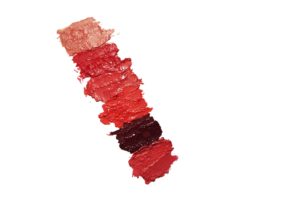
Ingredients
- 2 teaspoons sweet almond oil
- 1 teaspoon beeswax
- 1 teaspoon cacao butter or shea butter.
- Optional: 1-2 drops of essential oils (like cinnamon, peppermint, or cherry)
Ingredients: coloring options
- ¼ teaspoon beet powder
- ¼ teaspoon freeze-dried strawberry powder
- ¼ teaspoon cacao powder
- ¼ teaspoon cinnamon powder
- ¼ teaspoon maca powder
Instructions
- Melt down all the ingredients in a double broiler
- Store either in a jar and apply with a finger, or pour into a lipstick tube kit (available online)
- Set in the fridge for 2 hours
Lip Balm

Ingredients:
- 3 tablespoon coconut oil
- ½ teaspoon raw honey
- 1 tablespoon sweet almond oil
- 2 tablespoon beeswax
- Optional: 20 drops essential oil (we like lemon!)
- Optional: up to ½ teaspoon of beetroot powder if you want it to be tinted pink/ red
Instructions:
- In a double boiler, melt down all the ingredients
- Add in optional beetroot powder, the more you stir in the darker it will be
- Store in an airtight lip balm container, set in the fridge for 1 hour
Lip Gloss
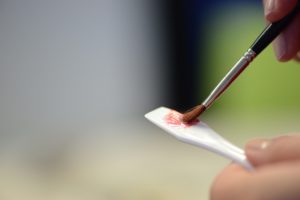
Ingredients
- 2 tablespoons olive oil
- 1 tablespoon coconut oil
- 1 tablespoon cacao butter
- 1/2 tablespoon beeswax
- 2 capsules of vitamin E
- Optional: 10 drops of essential oil (like orange or cherry)
- Optional: ½ teaspoon beetroot powder
Instructions
1. Melt down all the ingredients in a double boiler and stir well
- Store in an airtight container, chill in the fridge for 1 hour to set
Makeup Remover
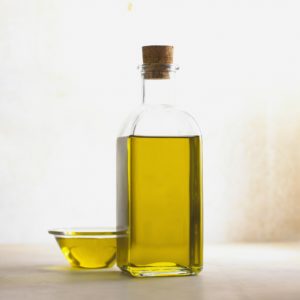
Removing makeup can easily be done without toxins! Oil cleansing is a great way to remove not only your makeup but also impurities from the skin that may have built up over the day. Simply apply any organic oil (coconut, sweet almond, jojoba, olive) and massage into the skin. You can use cotton pads to help remove any eye makeup or mascara. Rinse using a washcloth with warm water. A spritz of witch hazel can help get any leftover makeup, and help tone/ balance the skin’s pH.
References
- Coster, Sam De, and Nicolas Van Larebeke. “Endocrine-Disrupting Chemicals: Associated Disorders and Mechanisms of Action.” Journal of Environmental and Public Health, vol. 2012, 2012, pp. 1–52., doi:10.1155/2012/713696.
- “The Toxic Twenty Chemicals and Contaminants in Cosmetics.” EWG, www.ewg.org/californiacosmetics/toxic20.
- Bilal, Muhammad, and Hafiz M.n. Iqbal. “An Insight into Toxicity and Human-Health-Related Adverse Consequences of Cosmeceuticals — A Review.” Science of The Total Environment, vol. 670, 2019, pp. 555–568., doi:10.1016/j.scitotenv.2019.03.261.
- Appraisal of the Safety of Chemicals in Foods, Drugs, and Cosmetics. The Association of Food and Drug Officials of the United States, 1979.


